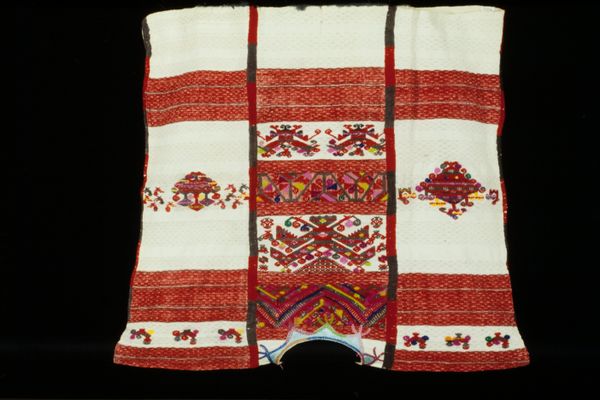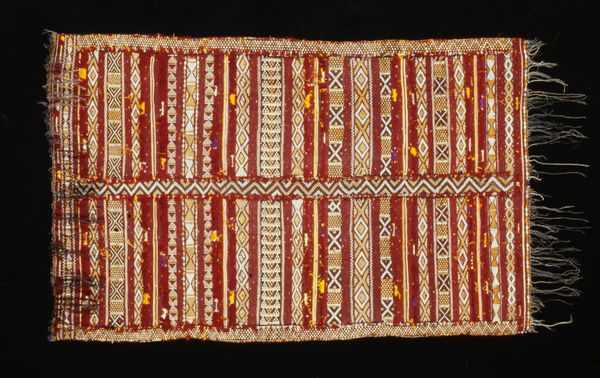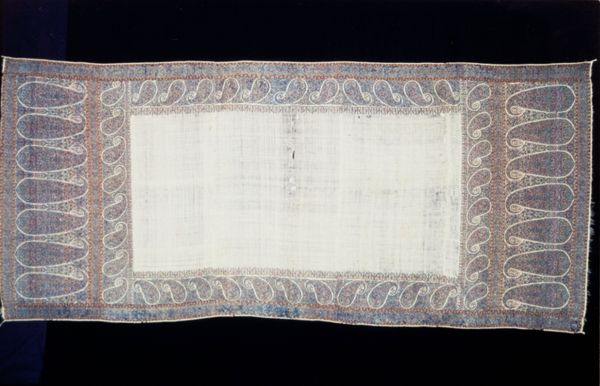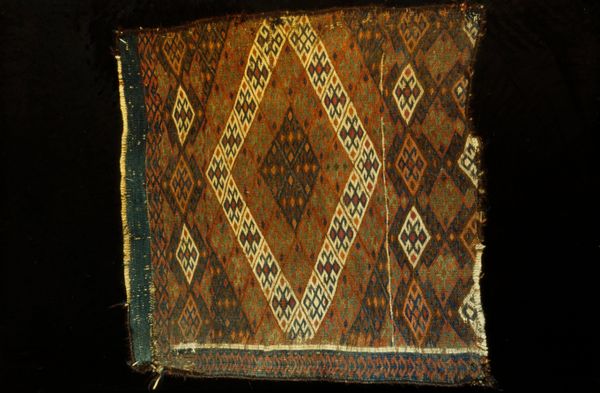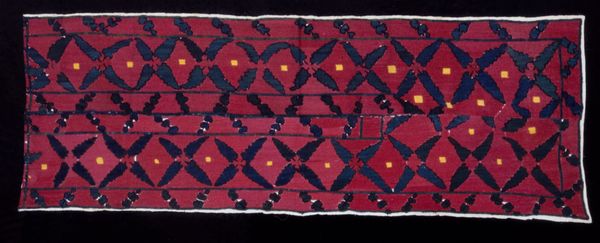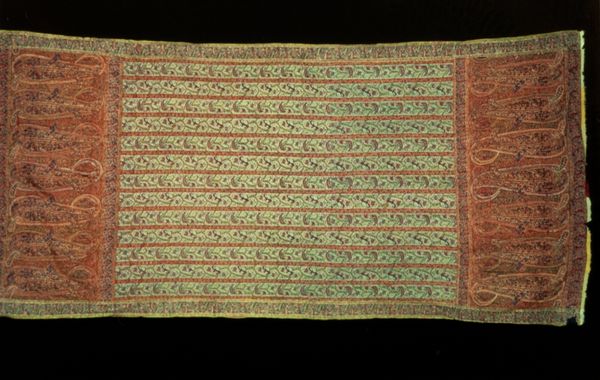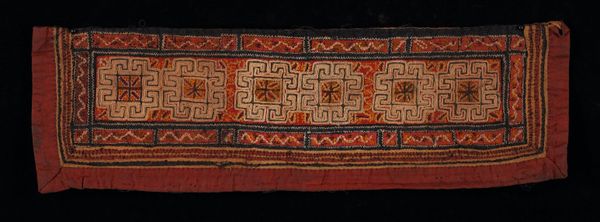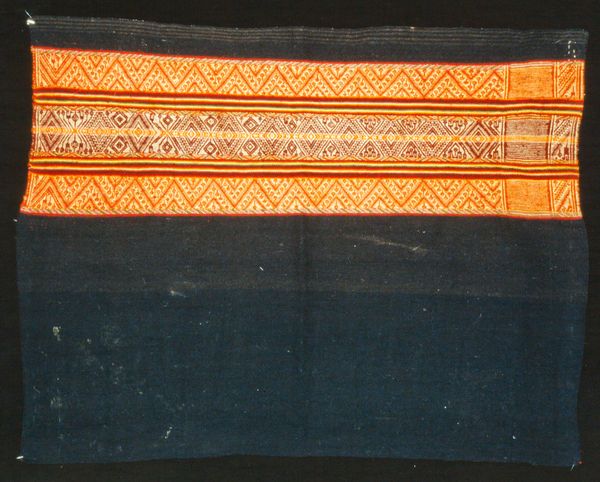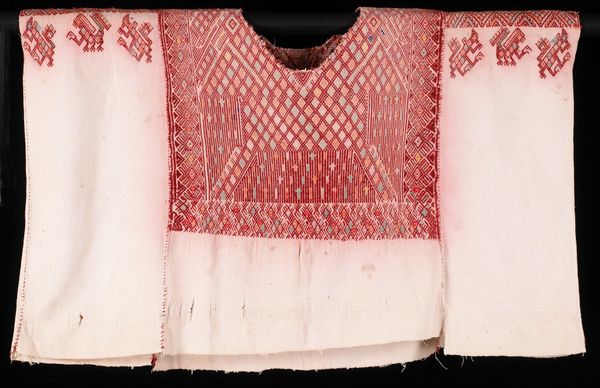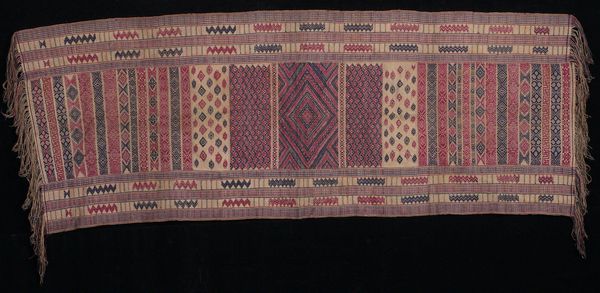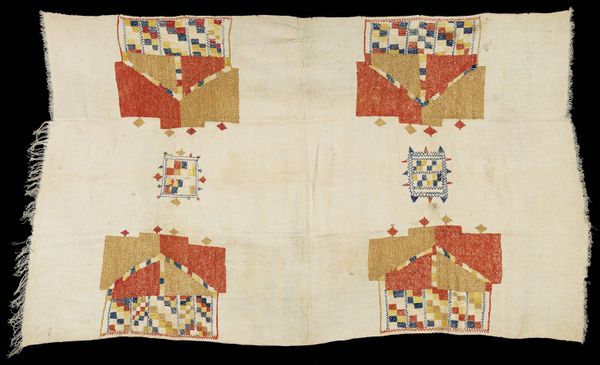
fibre-art, weaving, textile, cotton
#
fibre-art
#
weaving
#
textile
#
hand-embroidered
#
cotton
#
indigenous-americas
Dimensions: 22 1/4 x 39 11/16 in. (56.52 x 100.81 cm)
Copyright: Public Domain
Editor: Here we have a Woman’s blouse, a "Huipil," dating back to about 1930. It's a textile piece with mixed media elements, primarily cotton weaving and hand-embroidered details. The geometric patterns and the use of color give it a very striking appearance. How do you interpret the visual language of this huipil in the context of its historical setting? Curator: These blouses, these huipiles, weren't just clothing; they were powerful indicators of identity, community, and even social status within Maya communities. The patterns, colors, and techniques are steeped in cultural significance, reflecting a community's history and worldview. Consider how these blouses were both deeply personal items, worn every day, and highly public statements about who the wearer was. How does knowing this change the way you see the piece? Editor: That definitely shifts my perspective. I was initially drawn to the aesthetic appeal, but now I’m thinking about the women who wore these and what the designs meant to them. Curator: Exactly. And remember, the creation and wearing of these textiles can be seen as a form of cultural resistance and preservation, especially during periods of colonial influence and globalization. What do you think about that connection? Editor: So it's not just beautiful, but also a political act? This really underscores the agency and skill of the women who created these garments. I had never considered textiles in quite this way before. Thanks! Curator: My pleasure. Seeing art through a historical lens reveals its enduring power, demonstrating how it shapes societies and preserves cultural identities, doesn't it?
Comments
minneapolisinstituteofart almost 2 years ago
⋮
Mayan huipiles are silent but eloquent expressive forms that convey multiple meanings. They are the principal medium through which community and individual identity is transmitted and constructed. In the late nineteenth century, Mayan villages officially adopted community-based styles of dress, reflecting local weavers' technical proficiency, aesthetic sensibility, and unique perception of color. While Mayan men adopted Western dress in increasing numbers, Mayan women continued to wear the traditional blouse (huipil) and skirt (corte) of their ancestors, embellished in the readily identifiable style of their community. Huipiles also express economic status. Wealth is revealed through fabric, yarn, color, and design, and embellishments. Women may own several huipiles of different qualities and condition, reserving the most spectacular examples for important occasions such as weddings and festivals. Today, Mayan women often trade or buy huipiles created in neighboring villages, revealing a modern interest in fashion and individual style.
Join the conversation
Join millions of artists and users on Artera today and experience the ultimate creative platform.

